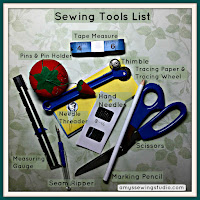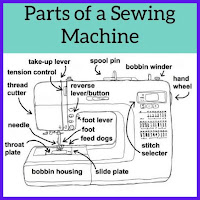Master the Art of Cutting and Sewing: A Complete Basic Guide for Beginners
Master the Art of Cutting and Sewing: A Complete Basic Guide for Beginners
Embarking on the journey of cutting and sewing is both exciting and rewarding. This comprehensive guide is designed to equip beginners with the essential knowledge and skills needed to create beautiful, handmade garments.
Introduction
Sewing is a timeless craft that combines creativity with practicality. By learning to sew, you can customize your wardrobe, express your personal style, and develop a valuable skill set. This guide aims to demystify the art of sewing, providing clear, step-by-step instructions to help you confidently embark on your sewing journey.
Chapter 1: Fundamentals of Cutting and Sewing
Before diving into the world of sewing, it’s essential to understand the
basics that have shaped this ancient craft. Sewing has been crucial in
human history, from early handmade garments to today’s highly technical fashion
industry.
Over the centuries, sewing has evolved to adapt to changing societal
needs. From the intricate garments of royalty to the practical clothing of the
working class, sewing has reflected the culture, economy, and creativity of
each era.
Types of Fabrics and Their
Characteristics
Different fabrics behave in different ways, so knowing their properties
is crucial. Here are some common fabrics used in sewing:
- Cotton – Soft,
breathable, and easy to sew; great for beginners.
- Linen – Lightweight
and comfortable, but wrinkles easily.
- Silk – Luxurious
and delicate; requires careful handling.
- Wool – Warm and
durable, but can shrink if not handled properly.
- Polyester and Nylon – Synthetic fabrics that are strong and resistant to wrinkles.
Essential Tools for Sewing
To begin sewing, you’ll need some essential tools:
- Sewing machine
- Fabric scissors
- Pins and pin
cushion
- Measuring tape
- Tailor’s chalk
or fabric marker
- Hand-sewing
needles
- Threads in
various colors
Sewing Glossary
Familiarizing yourself with sewing terms will help you follow
instructions more easily. Here are some basic terms:
- Bias – A strip of
fabric cut diagonally, used to finish edges or as decoration.
- Hem – The folded
and sewn edge of a garment, usually at the bottom.
- Gathering – A technique
where fabric is bunched together to create a ruffled effect.
- Seam allowance – The space
between the stitch line and the fabric edge, usually 1.5 cm.
- Pattern – A paper
template used to cut fabric pieces for a garment.
With these basics in mind, you are ready to explore the exciting world of
sewing!
Chapter 2: Getting to Know Your Sewing
Machine
A sewing machine is the heart of any sewing project, and learning how to
use it is essential for success.
Parts of a Sewing Machine
- Handwheel – Manually
raises and lowers the needle.
- Reverse lever – Allows you
to sew backward to reinforce stitches.
- Stitch selector – This lets you
choose different stitch types.
- Stitch length
control – Adjusts the length of individual stitches.
- Stitch width
control – Adjusts the width of zigzag stitches.
- Needle plate – The flat
surface under the needle, with guides for sewing straight.
- Presser foot – Holds the
fabric in place while sewing.
- Needle threader – Helps thread
the needle easily.
- Bobbin – Holds the
bottom thread that interlocks with the top thread to form stitches.
Threading the Machine
Proper threading is crucial for smooth sewing. The top thread must pass
through various guides and tension disks before being threaded into the needle.
The bobbin thread should be wound correctly and placed in its compartment.
Always check your sewing machine manual for specific threading instructions.
Basic Machine Maintenance and
Troubleshooting
Regular maintenance ensures your machine runs smoothly:
- Clean out lint
and fabric debris regularly.
- Oil moving
parts as per the manufacturer’s instructions.
- Change needles
frequently to avoid fabric damage.
- Adjust thread
tension for even stitches.
Common machine problems like thread breaking or uneven stitches can often
be solved by rethreading, changing the needle, or adjusting the tension.
Chapter 3: Basic Sewing Techniques
Mastering basic sewing techniques is essential for making garments and other projects look professional.
Common Stitch Types
- Straight Stitch – The most
basic and versatile stitch, used for simple seams and topstitching.
- Zigzag Stitch – Used for
finishing edges, sewing stretch fabrics, and decorative effects.
- Stretch Stitch – Ideal for
sewing stretchy fabrics without breaking the thread.
- Overlock Stitch – Prevents
fabric edges from fraying, often done with an overlock machine.
How to Sew Buttons, Buttonholes, and
Zippers
- Buttons – Use a
buttonhole presser foot and a zigzag stitch to attach securely.
- Buttonholes – Most
machines have a built-in function for buttonholes.
- Zippers – A zipper
foot helps attach zippers neatly, either exposed or hidden.
How to Sew a Hem
Hems give garments a neat finish. They can be done using a basic straight
stitch or a blind hem stitch for an invisible look.
Chapter 4: Pattern-Making Basics
Patterns are templates used to cut fabric pieces before sewing.
How to Take Body Measurements
To ensure a proper fit, take the following measurements:
- Bust
circumference
- Waist
circumference
- Hip
circumference
- Back length
- Sleeve length
- Crotch depth
(for pants)
How to Read and Adjust Patterns
Patterns include markings that show where to cut, fold, and sew. You may need to modify a pattern for a better fit by:
- Lengthening or
shortening sections
- Adjusting the
bust, waist, or hip width
- Changing sleeve
shapes
Chapter 5: Cutting Fabric
 Accurate fabric cutting ensures well-fitting garments.
Accurate fabric cutting ensures well-fitting garments.
Preparing Fabric Before Cutting
- Wash and dry
fabric to prevent shrinkage.
- Iron the fabric
to remove wrinkles.
Cutting Techniques
- Use sharp
fabric scissors or a rotary cutter.
- Pin the pattern
securely to the fabric before cutting.
- Follow the
fabric grainline for proper drape.
Chapter 6: Sewing Basic Garments
Once you understand the basics, you can start sewing simple clothing
items such as:
- A basic skirt
with an elastic waistband
- A sleeveless
dress with darts for shaping
- A simple blouse
with sleeves
- Comfortable
elastic-waist pants
Chapter 7: Finishing Touches and
Details
Final touches elevate your sewing projects:
- Invisible hems
create a polished look.
- Pockets add
both style and functionality.
- Embellishments
like lace, ruffles, or embroidery add uniqueness.
Chapter 8: Advanced Sewing Projects
Once confident, try making more complex garments such as:
- A structured
jacket
- A fully lined
dress
- Garments made
from delicate fabrics like silk or velvet
Chapter 9: Customization and
Alterations
Personalize your creations by modifying patterns, adjusting garment fit,
or adding decorative elements.
Chapter 10: Tips for Sewing Success
- Invest in
quality tools.
- Take your time
and enjoy the process.
- Always test
stitches on fabric scraps first.
- Learn from
mistakes and keep practicing.
Conclusion
Sewing is a lifelong skill that allows you to express creativity and make
unique, high-quality garments. Keep learning, experimenting, and enjoying the
process!
|
|

















